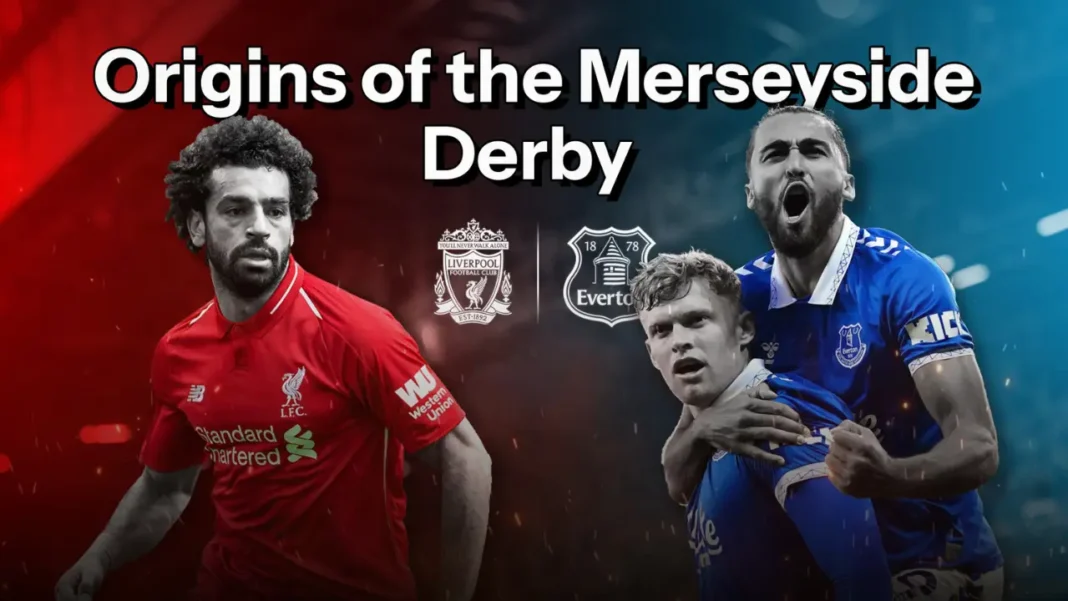Liverpool isn’t just a city. It’s a rhythm, a heartbeat, a religion.
Every street corner echoes with football — from kids kicking a battered ball against brick walls to pub debates that never end. And right at the centre of that obsession stands the Merseyside Derby: Everton vs Liverpool.
It’s the longest-running top-flight derby in English football, first played in 1894 and contested every single season since 1962.
Less than a mile separates the two clubs’ grounds across Stanley Park. Families are divided by it. Friendships tested. For decades, it was even nicknamed the friendly derby because, unlike most rivalries, red and blue often sat together in the stands.
But don’t let the name fool you. This is no soft handshake of a derby. Its intensity, its history, its pride. And over the years, it has delivered everything from iconic goals to full-blown chaos.
So how did this rivalry really begin? And how did a split over politics and pints create one of English football’s greatest derbies? Let’s rewind.
The Merseyside Derby History
The Split: From Anfield to Goodison
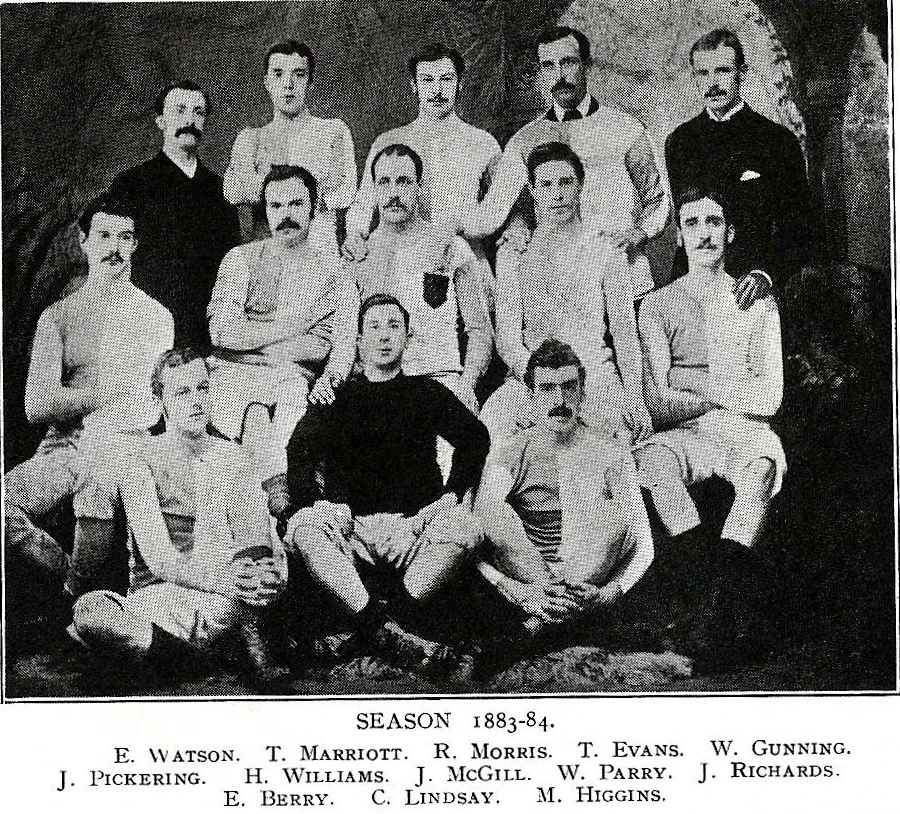
To understand the Merseyside Derby, you’ve got to start with Everton. Founded in 1878, they were Liverpool’s first giant, playing their matches at Anfield. But by the early 1890s, things turned ugly.
The flashpoint wasn’t football, but politics and money. Club chairman John Houlding, a Conservative and brewer, owned Anfield. Many on Everton’s board, however, were Liberal Party men, heavily tied to the temperance movement. To them, beer was a vice, not a business.
When Houlding raised the rent on Anfield, the board revolted. Ideological divides hardened: autocracy vs democracy, brewer vs teetotalers. By 1892, the break was final. Everton marched across Stanley Park to a new home — Goodison Park.
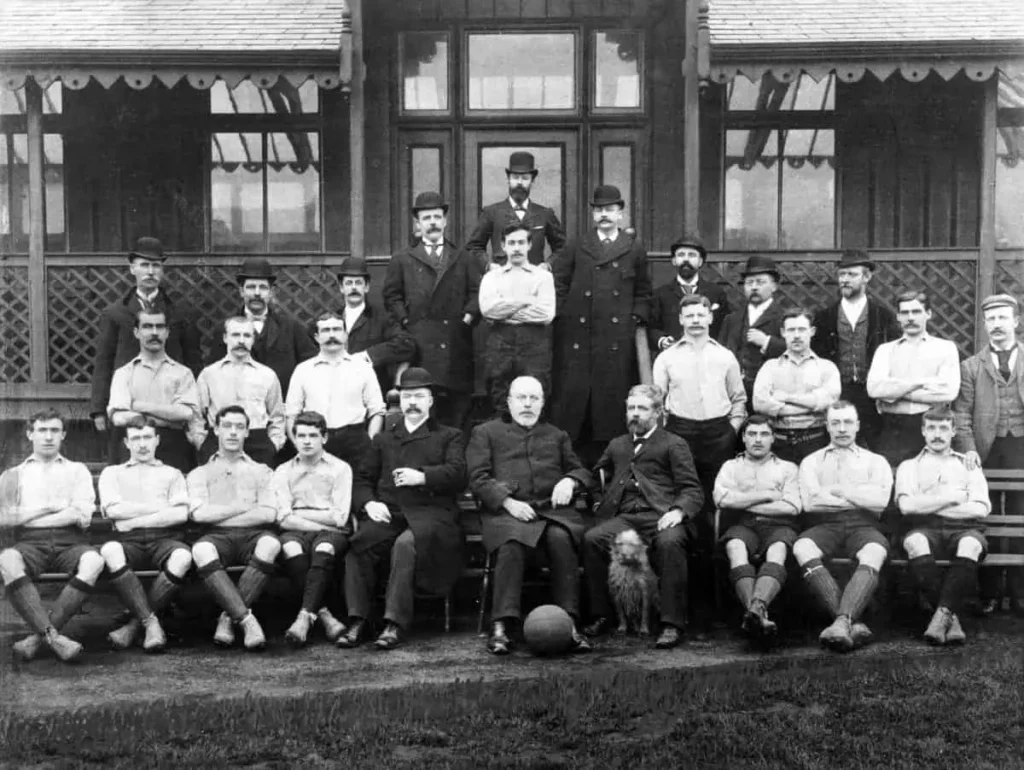
And Houlding? He was left with an empty stadium. His answer was bold: create a brand-new club to fill it. That club became Liverpool Football Club.
One split, two clubs, one city forever divided.
Early Years: Religion, Politics, and Football
From the beginning, football in Liverpool wasn’t just about sport. It was tangled with religion, politics, and identity.
Houlding himself was a member of the Orange Order, strongly Unionist. Meanwhile, Everton’s George Mahon leaned Liberal and supported Irish Home Rule. In a city filled with Irish immigrants — both Protestant and Catholic — those tensions mattered.
Still, the football did the talking. By the late 19th century, attendances of 10–15,000 weren’t uncommon, and local politicians quickly realised that football was a powerful platform to reach the masses.
On the pitch, the rivalry grew fast. Liverpool won their first league title in 1901. Everton hit back with an FA Cup win in 1906. The stage was set: red vs blue, success vs success, and a city hooked on football.
The Friendly Derby
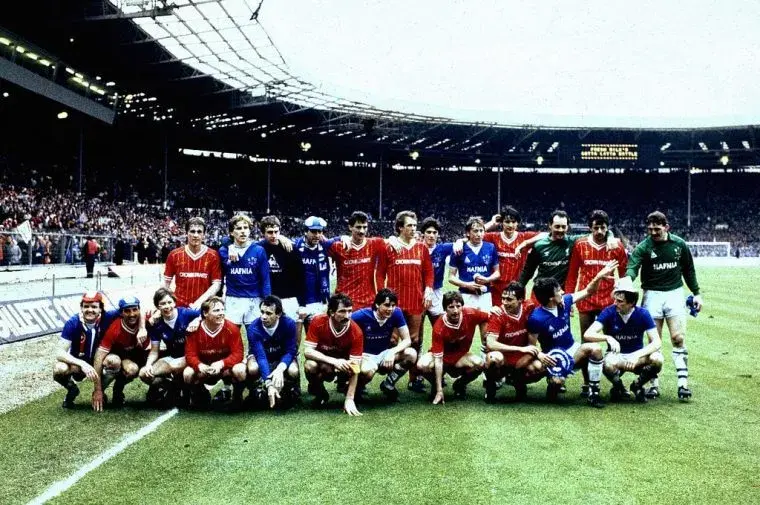
Unlike most English rivalries, Merseyside was different. Families often had both red and blue under one roof. Brothers split allegiances. Neighbours sat side by side in the stands.
For decades, fan segregation wasn’t enforced. The atmosphere was fierce, yes, but rarely violent. That’s why the derby was often called the friendly derby.
The 1984 League Cup final summed it up perfectly. Liverpool and Everton packed out Wembley, but instead of hostility, fans joined together in chants of Merseyside, Merseyside. Two years later, in the FA Cup final, the same solidarity shone through.
That doesn’t mean the derby lacked fire. Far from it. Since the Premier League’s creation, it has produced more red cards than any other fixture. Family-friendly? Sure. But also ferociously competitive.
The 1960s: A City on Top of England
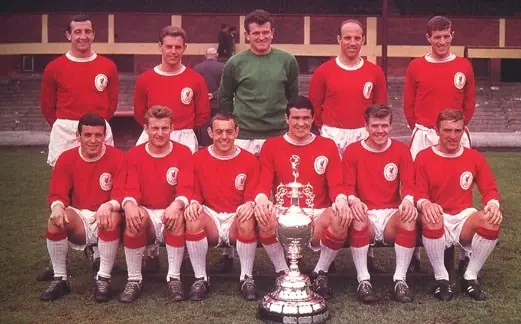
The 1960s were Liverpool’s coming-of-age, but Everton weren’t far behind.
Under Bill Shankly, Liverpool became a force, winning the First Division in 1964 and 1966. But Everton, led by Harry Catterick, weren’t about to be overshadowed. They won the league in 1963 and 1970, and their free-flowing football made Goodison one of the most intimidating grounds in the country.
This was the golden age of Merseyside dominance. Red or blue, it didn’t matter — Liverpool was running English football. The derby wasn’t just a local clash; it was often a battle between the country’s two best sides.
The 1980s: Merseyside Rules Europe
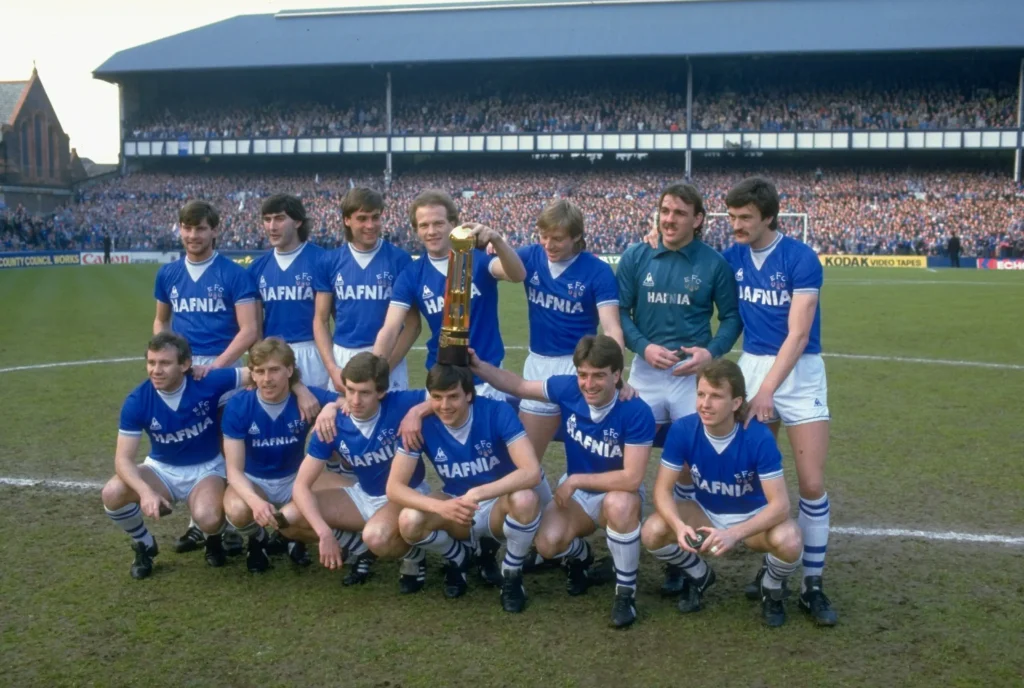
If the 1960s were golden, the 1980s were platinum. Both Liverpool and Everton reached their peaks — and the derby reached new heights.
Howard Kendall’s Everton side was sensational. With Peter Reid, Neville Southall, and Gary Lineker, they won league titles in 1985 and 1987, plus the European Cup Winners’ Cup. Liverpool, meanwhile, under Bob Paisley, Joe Fagan, and Kenny Dalglish, was a juggernaut, conquering England and Europe.
The climax came in 1985–86. The two clubs went toe-to-toe all season, battling for both league and FA Cup glory. Everton led the league for much of the campaign, but Liverpool overtook them late to secure the title. A few weeks later, they met in the FA Cup final. Gary Lineker struck first for Everton, but Liverpool roared back with goals from Ian Rush (twice) and Craig Johnston. The Reds sealed the double, leaving Everton gutted.
But the respect between the two sets of fans shone through. Even tragedies like Hillsborough and Heysel saw both sides stand shoulder to shoulder. In those moments, Merseyside wasn’t divided by red and blue — it was united in grief and solidarity.
The 1990s: Liverpool’s Dip, Everton’s Struggles
The 1990s weren’t kind to either side.
Liverpool, once the kings of Europe, slipped behind Manchester United. Everton, meanwhile, flirted with relegation and struggled for stability. Still, the derby remained box-office.
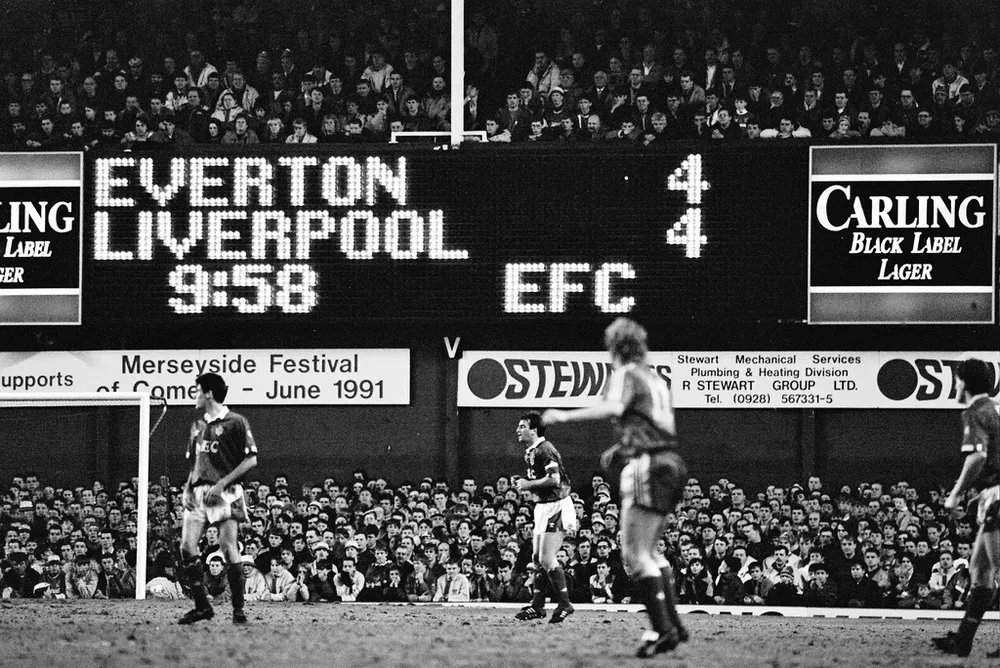
In 1991, Everton and Liverpool played out a legendary 4–4 FA Cup draw, one of the most thrilling ties in the competition’s history. Peter Beardsley scored twice, and the atmosphere was electric. Kenny Dalglish resigned days later, citing exhaustion — a seismic moment in Liverpool’s history.
Everton, though struggling, still found joy in derby wins. Duncan Ferguson became a cult hero, bullying Liverpool defences and scoring crucial goals. Goodison Park remained a nightmare away day for the Reds throughout the decade.
But overall, this was the decade when the derby became less about titles and more about pride. Neither side was ruling England anymore.
The 2000s: Crawling back
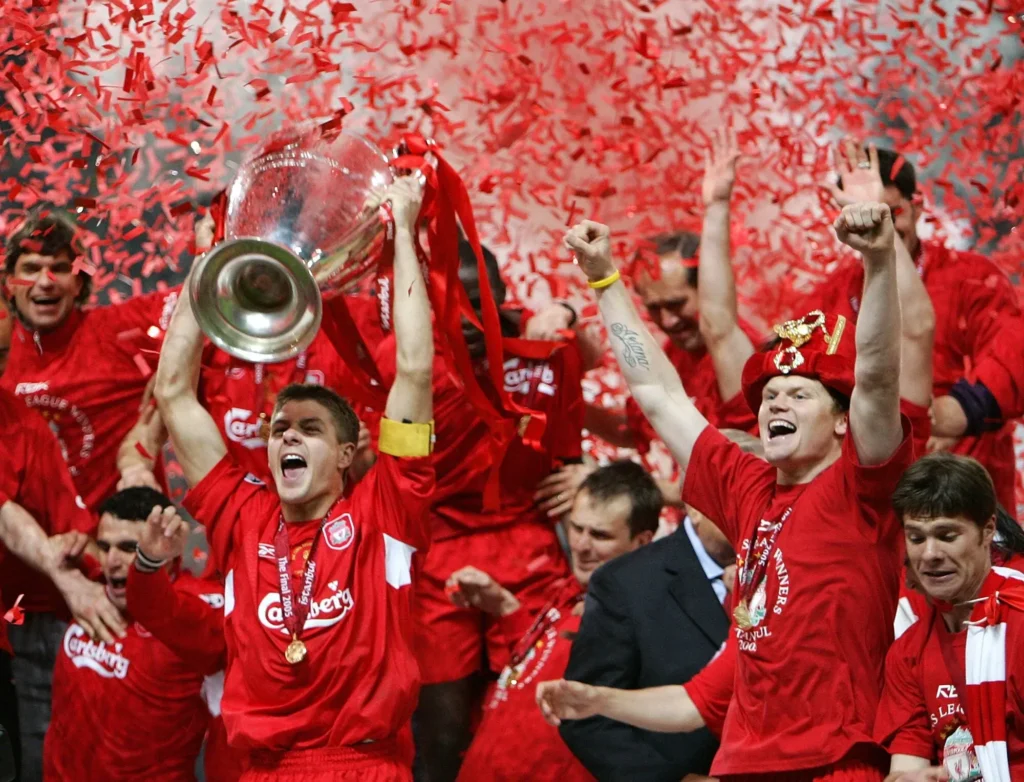
The Premier League era brought new dynamics. Liverpool, powered by Steven Gerrard, enjoyed European success — the miracle of Istanbul in 2005 remains immortal. Everton, under David Moyes, became resilient, tough to beat, and occasionally gatecrashed the top four.
In 2004–05, Everton even finished above Liverpool, securing Champions League qualification. For the blue half of Merseyside, it was a rare bragging right. For the red half, it was motivation, which they used to lift the European Cup weeks later.
Derbies in this era were fiery. Red cards piled up. Goals from Gerrard, Kuyt, Cahill, and Arteta defined the clashes. And though Liverpool usually had the edge, Everton never made it easy.
Klopp vs Everton: A One-Sided Affair?
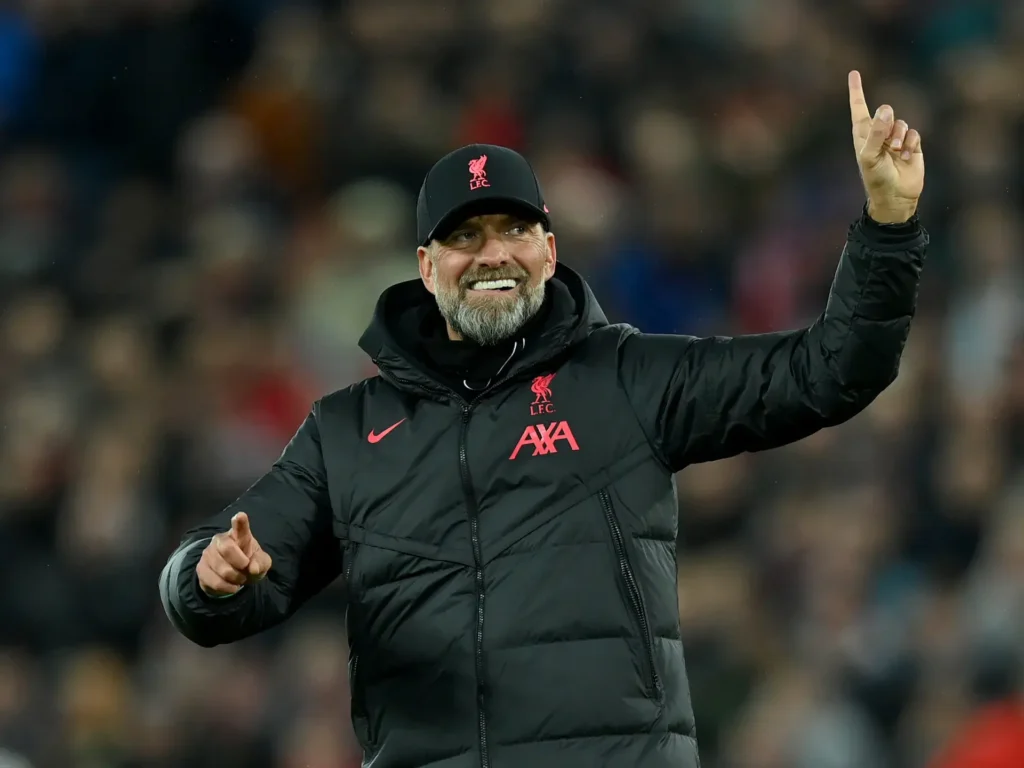
The arrival of Jürgen Klopp in 2015 changed everything. Liverpool became a machine, sweeping through Europe and finally lifting the Premier League in 2020.
For Everton, the story was tougher. Manager after manager tried to break the cycle, from Martinez to Koeman to Ancelotti. There were flashes — a win at Anfield in 2021 ended a 22-year wait — but mostly, it’s been Liverpool dominance.
Divock Origi etched his name into derby folklore with last-minute winners. Mohamed Salah scored screamers that silenced Goodison. For Everton fans, frustration grew. For Liverpool, it was just another chapter of superiority.
And yet, the rivalry never dies. In April 2024, Everton stunned Liverpool 2–0 at Goodison, wrecking the Reds’ title hopes. Blue flares lit up the stands. Chants of “You lost the league at Goodison Park” rang out.
For Evertonians, it was bliss. For Liverpool, agony. That’s the Merseyside Derby in a nutshell.
The Friendly Derby in Modern Times
Despite the intensity on the pitch, the Merseyside Derby has always had a unique spirit. Unlike United vs City or Arsenal vs Spurs, this one often feels like a family feud.
When 11-year-old Everton fan Rhys Jones was tragically murdered in 2007, Liverpool invited his family to Anfield as a gesture of solidarity. After the Hillsborough verdict in 2012, Everton paid tribute by leading out with “96” shirts. And at Wembley in 1984, fans from both clubs chanted together as one.
That spirit even shows up in the lighter moments. During Liverpool’s Premier League title celebrations in 2025, Everton fans pulled off a cheeky prank. One supporter bought 10,000 blue flares, stripped their labels, and rebranded them as red. Come matchday, plenty of unsuspecting Reds set them off — and suddenly, blue smoke filled the air during Liverpool’s big moment.
Yes, it’s fierce. Yes, it’s unforgiving. But it’s also a reminder that football, at its best, unites as much as it divides.
FAQ:
Q: When was the first Merseyside Derby played?
The first official derby took place on 13 October 1894, with Liverpool beating Everton 3–0 at Goodison Park.
Q: Why is it called the “friendly derby”?
Because fans from both clubs often sat together, families were split across red and blue, and the rivalry, while fierce, rarely descended into violence.
Q: Which derby has seen the most red cards in Premier League history?
The Merseyside Derby holds that record. It may be called friendly, but on the pitch, it’s one of the most heated fixtures in England.
Conclusion:
The Merseyside Derby is more than a football match. It’s history, politics, religion, family, triumph, and heartbreak rolled into one.
From the split at Anfield in 1892 to Salah’s screamers and Origi’s headers, it’s a story that never stops giving. Sometimes Liverpool dominates. Sometimes Everton strikes back. But every time, the city of Liverpool feels it deep in its bones.
Call it the friendly derby, call it a family feud — whatever name you give it, the Merseyside Derby is eternal.

